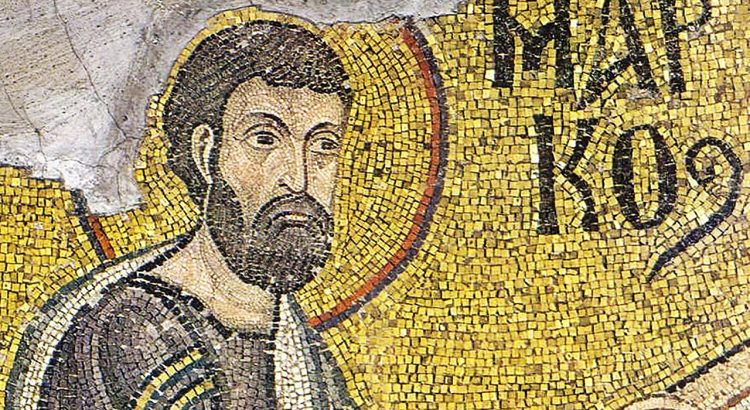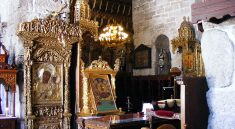While Mark was not from Cyprus, he did play a part in some major early Christian events on the island. He accompanied his cousin Barnabas and Paul on the First Missionary Journey and attended to their needs. He might have even gone ahead to make arrangements for when they arrived in Salamis on the First Missionary Journey. According to Acts of Barnabas, he returned with Barnabas to Cyprus after leaving Antioch a second time. The two met with several people they knew, ordained Auxibius and Heraklides as bishops of Cyprus, and Mark, Timon, and Rhodon buried Barnabas after he was martyred in Salamis.
Mark was an Evangelist; he was one of the 70 disciples of Pentecost, and some even believe he poured wine at the wedding of Cana. When he left Cyprus after Barnabas was killed, he headed to Egypt where he founded the Apostolic Coptic Church in Alexandria. He ranks first of the 117 patriarchs of that branch.
St. Mark was born in Cyrene (Libya) to Jewish parents about fifteen years after Christ, according to Coptic tradition. He was called John Mark. “And when he {Peter} came to himself ….., he {Peter} came to the house of Mary the mother of John, whose surname was Mark, where many gathered together praying” (Acts 12:11-12). “Barnabas determined to take with them John, whose surname was Mark” (Acts 15:37); “And Barnabas and Saul returned from Jerusalem, when they had fulfilled their ministry, and took with them John, whose surname was Mark” (Acts 12:25).
Severus Ebn-El-Mokafa (955-987AD) Coptic Bishop of Hermopolis Magna wrote John Mark’s biography, Life of the Apostle and Evangelist Mark.
St. Mark’s parents were Aristopolos and Mary who left their home in North Africa shortly after the birth of their son because the Berber tribes were raiding the area. They settled in Cana of Galilee not far form Jerusalem where they had relatives. After Aristopolos died, Peter a relative by marriage took care of John Mark and considered him a son: “The Church that is in Babylon, elected together with you, salutes you and so does Marcus {Mark} my son”(1 Peter 5:13). Peter supported Mark’s education in law and the classics.
Coptic Church tradition says that Mark’s mother was a great admirer of Jesus and followed Him everywhere, and John Mark was one of the attendants who served at the feast in Cana of Galilee at which Jesus turned water into wine.
Mark witnessed the preaching of Christ in Palestine as well as His Passion and was the author of the earliest Gospel to be written, which is in Greek.
He was martyred in 68 AD when pagans of Serapis tied him to a horse’s tail and dragged him through the streets of the Bokalia district in Alexandria, Egypt for two days until his body was torn to pieces. The Coptic Church celebrates his martyrdom on May 8.
His relics are wide spread. His head is in the church named after him in Alexandria; other relics are in St. Mark’s Cairo’s Cathedral. The rest of his relics were taken to Venice in 828 by Venetian merchants and are in the San Marco Cathedral in Venice, Italy; he is patron saint of not only Alexandria but also of Venice.
How St. Mark Got to Venice
According to the historians of the Basilica di San Marco in Venice, two Venetian merchants, Buono da Malamocco and Rustico da Torcello, went to pray at the church that housed the saint’s relics after finishing their business in Alexandria. The monk Staurazio and the priest Theodore, who guarded the saint, told the merchants they feared the church would be demolished and replaced with a mosque, a common practice in Egypt at the time.
The resourceful merchants, took the relics to their ship and hid them under cabbage leaves and pork, and replaced the relics with those of St. Claudia, as the story goes. In January 31, 838 St. Mark’s relics arrived at the Port of Olivolo and were given to the Doge Giustiniano Particiaco who kept them in his Ducal Palace until the new basilica was built. Of all the relics that were relocated to Europe over the ages, this account is the most highly documented.

